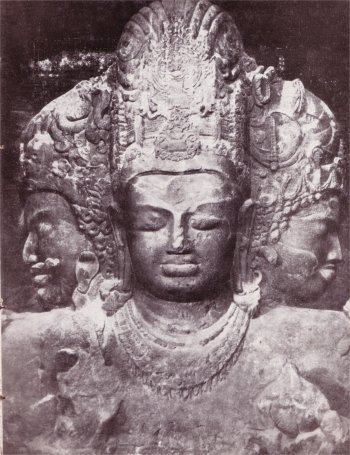The Rashrakutas
by Jyotsna Kamat
First Online: April 13, 2005
Page Last Updated: December 07, 2024
The Rashtrakuta dynasty (752-985 A.C.E) which ruled from Karnataka is illustrious for several reasons. They ruled the territory vaster than that of any other dynasty. Their contribution in the field of art and architecture is superb. The encouragement, several Rashtrakuta kings provided to education and literature is unique and the religious tolerance exercised by them was exemplary.
The word Rashtra, in Sanskrit indicates region and ‘Kuta' means chieftain. Rashtrikas were officers since very ancient times. It seems Rashtrakutas were chieftains in Central India earlier to becoming a ruling dynasty. Their branches were seen in Gujarat and Rajasthan. Rathod Rajputs claim descent from Rashtrakutas as also Rattas of Soudatti (Karnataka). Dantidurga of this family (752-756 C.E) was the first important king, who defeated the Chalukyas of Badami and became a sovereign, though the progenitor of this dynasty was Durgaraja (570-590 C.E)

Span of Rashtrakuta Empire
Rahtrakutas-reign lasted for nearly two and a half centuries (752-973 C.E) and fifteen kings ruled in between. Some of the kings were great soldiers and conquerors. During the reign of Govinda III, Indra III and Krishna III, their power and influence existed from the Himalayan region to Rameshwar. Govinda III, is eulogized is one inscription as, having horses which drank the icy water of the Himalayas and his war elephant tasted the sacred water of Ganga. His invincible armies overran the territories from Cape Comorin to Kanouj and from Banaras to Broach.
His son Amoghavarsha Nripatunga, is a familiar name to students of Kannada literature. Kaviraja marga, a book on poetics was ascribed to him. He ruled for sixty years. Karnataka's crux land lay from Kaveri to Godavari during his time as claimed in the book. By different Rashtrakuta kings, Kanouj was captured and Gujara Pratiharas made to fly. Both were powerful dynasties before Krishna I and Indra II made their appearance on the scene.
Krishna III made a clear political mark in the south by defeating the Chola king, whose distinguished ancient line had many victories to their credit. In the north Krishna III over ran Malava. A Kannada inscription found in the north Jura near Jabalpur, lists his political conquests in a poetic language. Most of the inscriptions found outside the region of Karnataka are in Sanskrit.
The Gangas, a line of ancient and predominant as also long ruling kings, became feudatories of Rashtrakutas and actively helped them in many important campaigns.
Rashtrakuta kings built several capitals as their political expansion grew. However their regal capital capital was Malkhed in Gulbarga district, also known as Manyakheta. The royal insignia of Rashtrakutas was bird Garuda, the vehicle of Vishnu. Both Shiva and Vishnu are invoked in the beginning of their records.
K.L. Kamat/Kamat's Potpourri
Trimurti of Elephanta
Faces of Brahma, Vishnu, and Maheswar embodied as one
Special mention may be made of the religious toleration of Rashtrakuta kings, through this trait is common to all rulers of Karnataka. Buddhism was in a descent state. But royal patronage to Buddhist scholar and Viharas was continued by these rulers. Dantidurga and Dhruva II defeated the Maitrakas of Sourastra (Gujarat), but made liberal grants to Buddhist Vihara and five hundred monks residing in that region. Jain scholars and religious institutions received same liberal donations. King Amogavarsha himself was a Jaina by faith, but a fervent devotee of Mahalakshmi. In order to avert the severe calamity of an epidemic (small pox?), this king sacrificed a finger to the goddess to please her.
Arabs on the westcoast received protection. Permission was accorded to these Muslim merchants to build mosques and appointed Muslim magistrates. Suleiman, a Muslim merchant who visited India in 9th century has written about the generosity and tolerance of ‘Balhara' Kings (Prithvivallabha or Vallabha was the title of Rashtrakuta kings). He considered Amogavarsha among the greatest emperors of the contemporary world, viz with those of China, Baghdad and Constantinople.
![]()
Table of Contents
- Art and Architecture of Rashtrakutas
- Kannada Literature under the Rashtrakutas
- The Lord of Kailash
- Sanskrit Literature under the Rashtrakutas
- Shiva and Rawana
- Trimurti of Elephanta
- A View of a Cave Complex, Elephanta
![]()
See Also:

